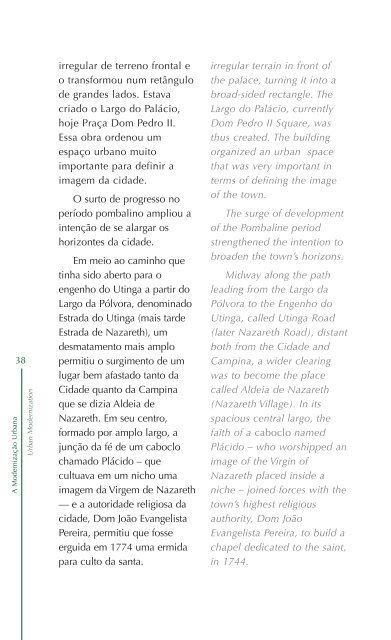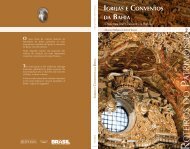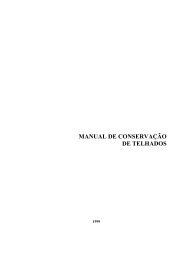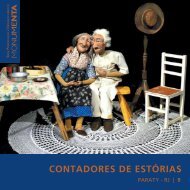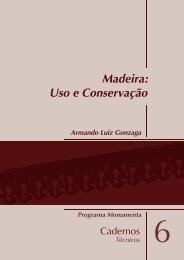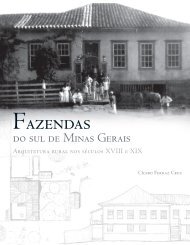LARGOS, CORETOS E PRAÇAS DE BELÉM - Monumenta
LARGOS, CORETOS E PRAÇAS DE BELÉM - Monumenta
LARGOS, CORETOS E PRAÇAS DE BELÉM - Monumenta
Create successful ePaper yourself
Turn your PDF publications into a flip-book with our unique Google optimized e-Paper software.
Urban Modernization<br />
A Modernização Urbana 38<br />
irregular de terreno frontal e<br />
o transformou num retângulo<br />
de grandes lados. Estava<br />
criado o Largo do Palácio,<br />
hoje Praça Dom Pedro II.<br />
Essa obra ordenou um<br />
espaço urbano muito<br />
importante para definir a<br />
imagem da cidade.<br />
O surto de progresso no<br />
período pombalino ampliou a<br />
intenção de se alargar os<br />
horizontes da cidade.<br />
Em meio ao caminho que<br />
tinha sido aberto para o<br />
engenho do Utinga a partir do<br />
Largo da Pólvora, denominado<br />
Estrada do Utinga (mais tarde<br />
Estrada de Nazareth), um<br />
desmatamento mais amplo<br />
permitiu o surgimento de um<br />
lugar bem afastado tanto da<br />
Cidade quanto da Campina<br />
que se dizia Aldeia de<br />
Nazareth. Em seu centro,<br />
formado por amplo largo, a<br />
junção da fé de um caboclo<br />
chamado Plácido – que<br />
cultuava em um nicho uma<br />
imagem da Virgem de Nazareth<br />
— e a autoridade religiosa da<br />
cidade, Dom João Evangelista<br />
Pereira, permitiu que fosse<br />
erguida em 1774 uma ermida<br />
para culto da santa.<br />
irregular terrain in front of<br />
the palace, turning it into a<br />
broad-sided rectangle. The<br />
Largo do Palácio, currently<br />
Dom Pedro II Square, was<br />
thus created. The building<br />
organized an urban space<br />
that was very important in<br />
terms of defining the image<br />
of the town.<br />
The surge of development<br />
of the Pombaline period<br />
strengthened the intention to<br />
broaden the town’s horizons.<br />
Midway along the path<br />
leading from the Largo da<br />
Pólvora to the Engenho do<br />
Utinga, called Utinga Road<br />
(later Nazareth Road), distant<br />
both from the Cidade and<br />
Campina, a wider clearing<br />
was to become the place<br />
called Aldeia de Nazareth<br />
(Nazareth Village). In its<br />
spacious central largo, the<br />
faith of a caboclo named<br />
Plácido – who worshipped an<br />
image of the Virgin of<br />
Nazareth placed inside a<br />
niche – joined forces with the<br />
town’s highest religious<br />
authority, Dom João<br />
Evangelista Pereira, to build a<br />
chapel dedicated to the saint,<br />
in 1744.


